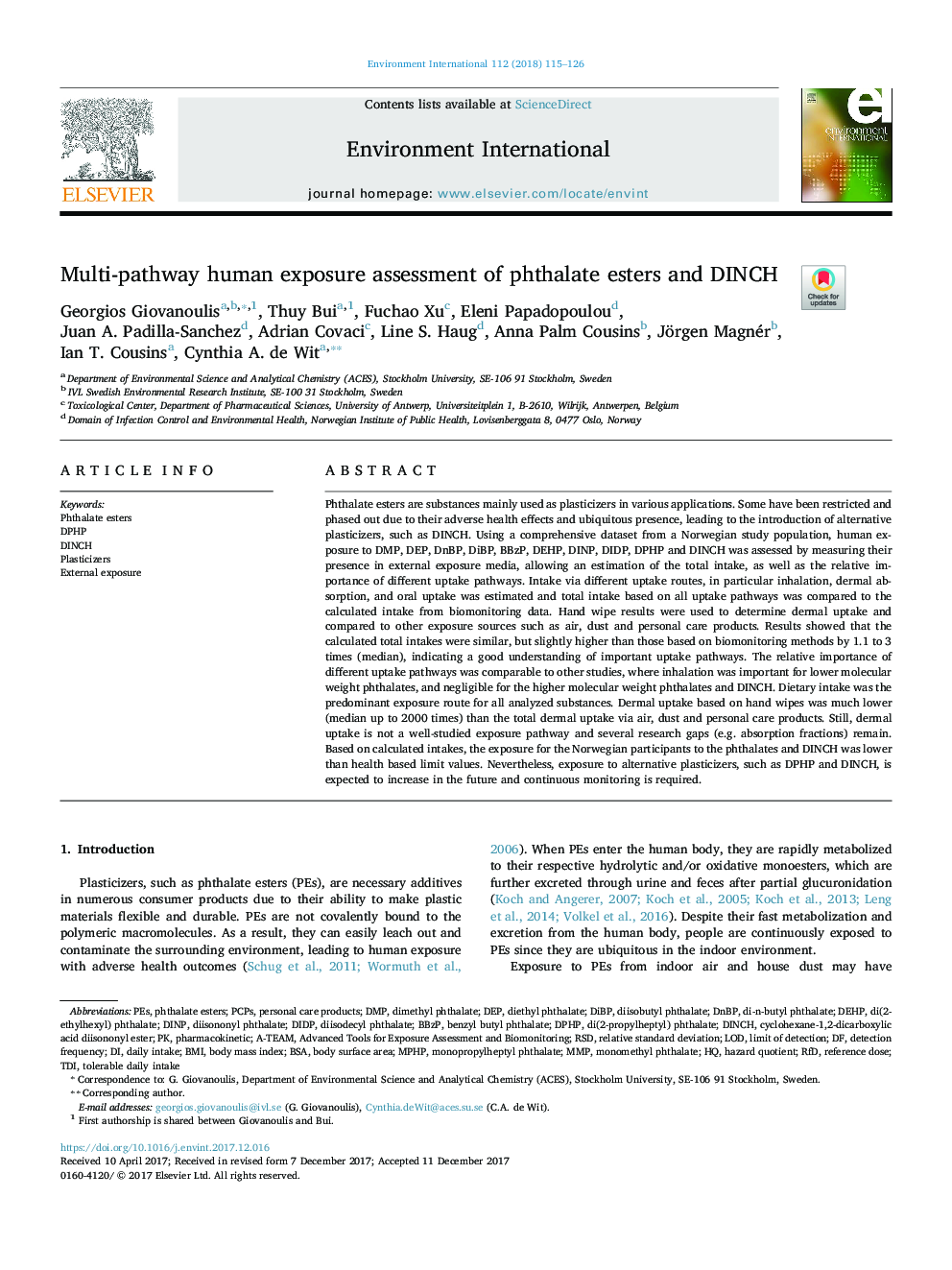| Article ID | Journal | Published Year | Pages | File Type |
|---|---|---|---|---|
| 8855441 | Environment International | 2018 | 12 Pages |
Abstract
Phthalate esters are substances mainly used as plasticizers in various applications. Some have been restricted and phased out due to their adverse health effects and ubiquitous presence, leading to the introduction of alternative plasticizers, such as DINCH. Using a comprehensive dataset from a Norwegian study population, human exposure to DMP, DEP, DnBP, DiBP, BBzP, DEHP, DINP, DIDP, DPHP and DINCH was assessed by measuring their presence in external exposure media, allowing an estimation of the total intake, as well as the relative importance of different uptake pathways. Intake via different uptake routes, in particular inhalation, dermal absorption, and oral uptake was estimated and total intake based on all uptake pathways was compared to the calculated intake from biomonitoring data. Hand wipe results were used to determine dermal uptake and compared to other exposure sources such as air, dust and personal care products. Results showed that the calculated total intakes were similar, but slightly higher than those based on biomonitoring methods by 1.1 to 3 times (median), indicating a good understanding of important uptake pathways. The relative importance of different uptake pathways was comparable to other studies, where inhalation was important for lower molecular weight phthalates, and negligible for the higher molecular weight phthalates and DINCH. Dietary intake was the predominant exposure route for all analyzed substances. Dermal uptake based on hand wipes was much lower (median up to 2000 times) than the total dermal uptake via air, dust and personal care products. Still, dermal uptake is not a well-studied exposure pathway and several research gaps (e.g. absorption fractions) remain. Based on calculated intakes, the exposure for the Norwegian participants to the phthalates and DINCH was lower than health based limit values. Nevertheless, exposure to alternative plasticizers, such as DPHP and DINCH, is expected to increase in the future and continuous monitoring is required.
Keywords
TDIRfDdi-n-butyl phthalateDiDPDPHPDINCHPCPsDEHPBBzPDnBPDIBPDEPMMPDMPRSDPESMPHPBSADiNPPhthalate estersrelative standard deviationBenzyl butyl phthalateLOD یا Limit of detectionReference dosedi(2-ethylhexyl) phthalateDiethyl phthalatediisobutyl phthalatedimethyl phthalatediisodecyl phthalatediisononyl phthalatebody surface areaHazard quotientbody mass indexBMIpharmacokineticDetection frequencyExternal exposurelimit of detectionPersonal care productsDaily intakeTolerable daily intakeMonomethyl phthalatePlasticizers
Related Topics
Life Sciences
Environmental Science
Environmental Chemistry
Authors
Georgios Giovanoulis, Thuy Bui, Fuchao Xu, Eleni Papadopoulou, Juan A. Padilla-Sanchez, Adrian Covaci, Line S. Haug, Anna Palm Cousins, Jörgen Magnér, Ian T. Cousins, Cynthia A. de Wit,
